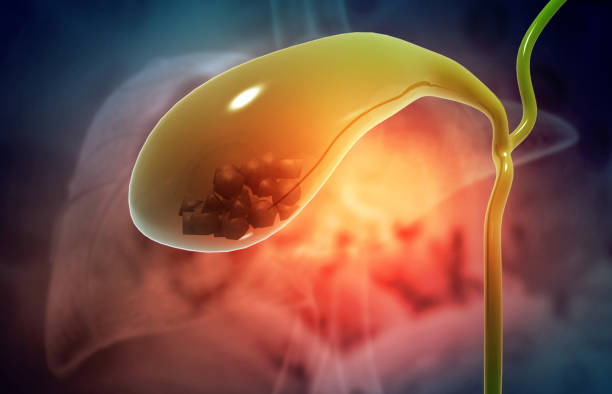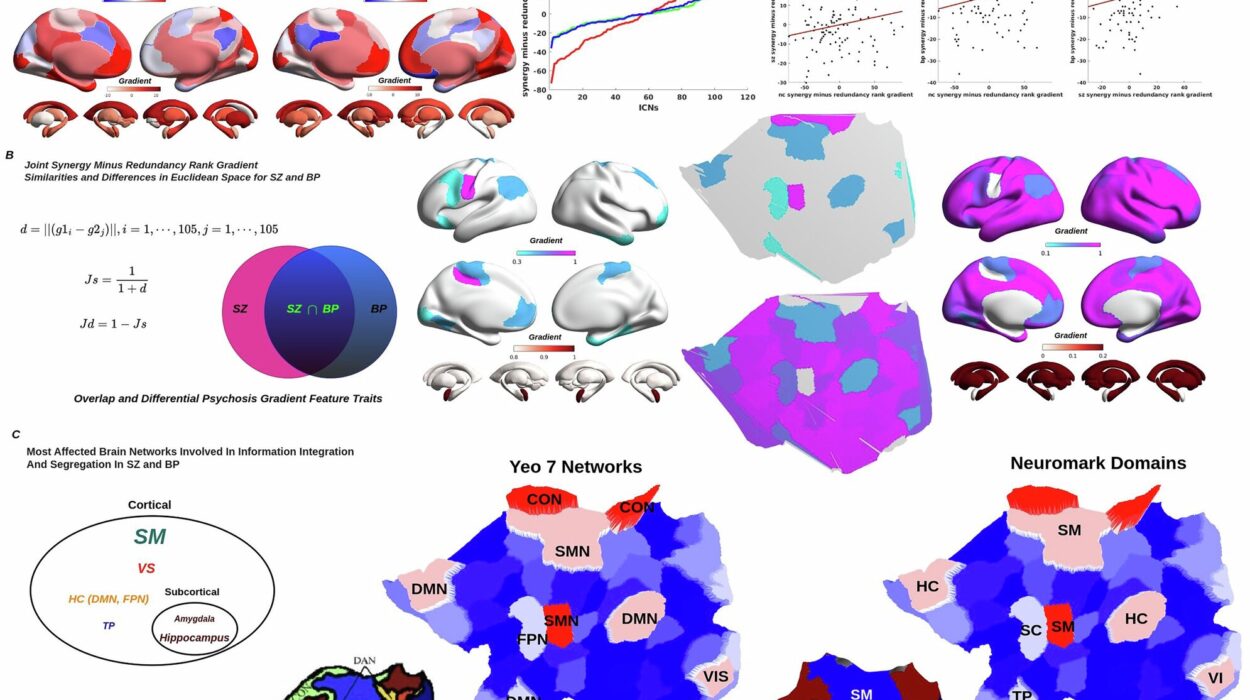There is a particular cruelty in the way Alzheimer’s disease works. Unlike many illnesses that strike swiftly, leaving little time for reckoning, Alzheimer’s moves like a shadow, slow and relentless. It creeps into a life quietly—perhaps in the form of a forgotten appointment, a misplaced word, a momentary blank when recalling the name of a familiar face. At first, these lapses are dismissed as simple aging. But with time, they deepen into something far more alarming: an erosion of the self, piece by piece, memory by memory.
Alzheimer’s disease is not merely a neurological condition; it is a dismantling of identity. It robs people of their stories, their sense of time, their recognition of loved ones, and eventually even the awareness of their own existence. Families watch as the person they knew seems to recede, replaced by a body that still breathes but a mind that drifts further into uncharted waters.
Behind this human tragedy lies a complex web of biological events—molecular missteps, genetic predispositions, and environmental influences—that researchers have spent decades trying to unravel. The question of what truly causes Alzheimer’s is still, in part, a mystery. But modern science has begun to illuminate the pathways by which this devastating disease takes root and spreads in the brain.
A Brief History of a Devastating Discovery
The disease takes its name from Alois Alzheimer, a German psychiatrist and neuropathologist who, in 1906, described the case of Auguste Deter, a 51-year-old woman who suffered from memory loss, confusion, language problems, and unpredictable behavior. Upon her death, Alzheimer examined her brain and saw two hallmark features under the microscope: strange clumps of protein, which he described as “plaques,” and twisted strands inside nerve cells, later called “tangles.” These pathological hallmarks would become the defining features of the disease that now bears his name.
At the time, the microscopic details of neurons and their chemical messages were barely understood. The idea that specific proteins could misfold, clump together, and disrupt brain function was revolutionary. Over the next century, scientists worked to identify the exact nature of these plaques and tangles, a journey that would lead to the central players in Alzheimer’s research today: amyloid-beta and tau.
The Brain Under Siege
To understand Alzheimer’s disease, it helps to picture the brain not as a static organ but as a living network, alive with electrical and chemical signals. Inside this network, neurons communicate through tiny junctions called synapses, where neurotransmitters leap across microscopic gaps to pass messages. These connections are not fixed; they can be strengthened, weakened, or even eliminated as part of learning and memory.
In Alzheimer’s disease, this delicate circuitry begins to fail long before symptoms appear. Studies of patients’ brains and advanced imaging techniques have shown that the breakdown of neural connections precedes large-scale neuron death. This early phase, which can last years, is marked by subtle disruptions in synaptic communication, leading to the first faint signs of memory trouble.
What triggers this breakdown? Here, amyloid-beta enters the scene. This small fragment of a larger protein—amyloid precursor protein (APP)—is normally produced and cleared away by the brain. But in Alzheimer’s disease, the balance shifts. Amyloid-beta accumulates, clumping together into sticky plaques between neurons. These plaques are not merely inert debris; they interfere with neuron-to-neuron signaling, provoke inflammation, and may set off a toxic chain reaction that ultimately kills brain cells.
Yet amyloid-beta alone does not tell the whole story. Many people have amyloid plaques in their brains without developing full-blown dementia, suggesting another culprit must be at work.
The Role of Tau: The Inside Saboteur
If amyloid-beta is the external disruptor, tau is the insider that completes the brain’s collapse. Tau is a protein that normally helps stabilize microtubules—tiny tracks inside neurons that transport nutrients and chemical signals. But in Alzheimer’s disease, tau undergoes abnormal chemical changes, becoming hyperphosphorylated and detaching from microtubules. Freed from its normal duties, tau begins to stick to itself, forming twisted filaments that bundle into tangles inside neurons.
These neurofibrillary tangles choke the life out of affected cells. Unlike amyloid plaques, which sit between neurons, tau tangles form inside them, directly disrupting essential cellular processes. The spread of tau pathology follows a predictable pattern, beginning in regions critical for memory, such as the hippocampus, and advancing into areas governing reasoning, language, and eventually even the body’s basic functions.
Recent research suggests that amyloid pathology may initiate the disease, but tau pathology drives the relentless progression of cognitive decline. The interaction between these two proteins—amyloid’s role in setting the stage, tau’s in delivering the knockout—remains a central focus in the search for effective treatments.
Inflammation and the Brain’s Immune Response
For years, Alzheimer’s research focused almost exclusively on plaques and tangles. But more recently, scientists have recognized that the brain’s own immune system plays a significant role in the disease’s progression.
Microglia, the brain’s resident immune cells, normally act as guardians, clearing away debris and harmful proteins. In Alzheimer’s disease, microglia become chronically activated in response to amyloid plaques and tau tangles. Instead of simply cleaning up, they release inflammatory molecules that can damage neurons and exacerbate the problem. This runaway inflammation, or neuroinflammation, creates a toxic environment that accelerates neuronal loss.
Genetic studies have underscored the importance of this immune connection. Variants in genes like TREM2, which influence microglial function, significantly alter Alzheimer’s risk. In people with certain TREM2 mutations, microglia may be less effective at clearing amyloid, allowing plaques to accumulate unchecked.
The Genetic Landscape of Alzheimer’s Risk
Alzheimer’s is not caused by a single gene mutation in most cases. Instead, it emerges from a complex interplay between multiple genes and environmental factors. However, a small subset of cases—known as familial Alzheimer’s—are caused by mutations in specific genes such as APP, PSEN1, or PSEN2. These mutations lead to excessive amyloid-beta production and almost guarantee the development of Alzheimer’s, often at a young age.
The much more common sporadic form of the disease involves many genes that influence risk, each contributing only modestly. Among them, the APOE gene stands out. It comes in several forms, or alleles: APOE2, APOE3, and APOE4. Carrying one copy of APOE4 increases the risk of Alzheimer’s several-fold; having two copies magnifies it even further. APOE4 seems to promote amyloid-beta accumulation and impair its clearance, though it may also have effects on tau and inflammation.
Importantly, having a high-risk gene like APOE4 is not a sentence—it increases susceptibility but does not make the disease inevitable. Many APOE4 carriers never develop Alzheimer’s, underscoring the role of non-genetic factors.
Blood Vessels and Brain Health
Another important piece of the Alzheimer’s puzzle lies in the brain’s vascular system. Neurons depend on a rich supply of oxygen and nutrients delivered by blood vessels. Any compromise in this supply can have serious consequences. Conditions such as hypertension, atherosclerosis, and diabetes can damage blood vessels, leading to reduced cerebral blood flow and a leaky blood-brain barrier.
In Alzheimer’s disease, vascular damage is often present alongside amyloid and tau pathology. The blood-brain barrier, which normally shields the brain from harmful substances, can become compromised, allowing inflammatory molecules and other toxins to enter. Some researchers believe that poor vascular health can accelerate or even trigger the pathological processes that define Alzheimer’s.
The Mitochondrial Connection
Inside each neuron, mitochondria serve as tiny power plants, generating the energy required for the cell’s activities. These organelles are highly sensitive to damage from oxidative stress—a condition in which harmful reactive oxygen species (ROS) accumulate faster than they can be neutralized. In Alzheimer’s disease, oxidative stress is elevated, and mitochondria show signs of dysfunction. This energy crisis leaves neurons more vulnerable to injury from amyloid, tau, and inflammation.
Oxidative stress also damages proteins, lipids, and DNA, creating a vicious cycle in which cellular components are progressively impaired. Some scientists argue that mitochondrial dysfunction may be an early driver of the disease, rather than a consequence.
Lifestyle and Environmental Influences
While Alzheimer’s is rooted in biological processes, lifestyle factors can significantly shape the brain’s resilience or vulnerability. Epidemiological studies have linked physical inactivity, poor diet, smoking, chronic stress, and social isolation to higher Alzheimer’s risk. Conversely, regular exercise, cognitive stimulation, healthy diet patterns like the Mediterranean or DASH diet, and strong social engagement seem to confer protective effects.
Education also plays a role. The concept of “cognitive reserve” suggests that people who engage in lifelong learning and mentally challenging activities build a more robust neural network. This reserve may allow them to tolerate greater amounts of Alzheimer’s pathology before symptoms emerge.
Exposure to environmental toxins, such as heavy metals or air pollution, has also been implicated, though these links are still under investigation. The interplay between these factors and genetic predisposition is one of the most active areas in Alzheimer’s research.
The Long Preclinical Phase
One of the most challenging aspects of Alzheimer’s is that the brain changes begin decades before symptoms appear. This “preclinical” phase can last 15 to 20 years, during which amyloid plaques and tau tangles silently accumulate. By the time memory problems become noticeable, significant neuronal damage has already occurred.
This long silent period is both a curse and an opportunity. It means the disease is well advanced by the time of diagnosis, limiting the effectiveness of treatments. But it also offers a potential window for prevention—if we can develop reliable biomarkers and interventions to detect and slow the disease in its earliest stages.
New Frontiers in Understanding Causation
Recent advances in neuroimaging, fluid biomarkers, and genetics are reshaping our understanding of Alzheimer’s causation. PET scans can now visualize amyloid and tau in the living brain, while blood tests for amyloid fragments and phosphorylated tau offer minimally invasive diagnostic tools. These technologies reveal that Alzheimer’s is not a simple linear process but a complex, interwoven network of pathologies.
Some researchers propose that Alzheimer’s may in fact be multiple subtypes with distinct causes, ranging from primarily amyloid-driven forms to those dominated by vascular injury or inflammation. This emerging view could explain why some treatments work in certain patients but not others.
Toward a Unified Theory
Bringing together the threads of amyloid, tau, inflammation, vascular health, mitochondrial function, and genetics, a picture emerges of Alzheimer’s as a multi-hit disorder. No single factor alone is sufficient; instead, a convergence of vulnerabilities tips the balance toward disease.
In this framework, amyloid accumulation may serve as the initiating event in many cases, destabilizing the brain’s environment. Tau pathology then accelerates cognitive decline, aided by chronic inflammation, vascular compromise, and cellular energy failure. Genetic predispositions and lifestyle factors modulate the speed and severity of this cascade.
This complexity underscores why developing effective treatments has been so challenging—and why prevention strategies that target multiple pathways may hold the most promise.
The Human Face of a Molecular Disease
Beyond the science, Alzheimer’s remains a profoundly human experience. It is the adult daughter who visits her mother in a care facility and hears her own name spoken as if to a stranger. It is the husband who gently corrects his wife when she insists they must pick up their young children—children who are now middle-aged. It is the individual who, in moments of lucidity, recognizes the creeping fog and feels the terror of losing themselves.
These stories remind us that the pursuit of understanding Alzheimer’s cause is not an abstract scientific endeavor—it is a race against time to preserve the essence of who we are.
Looking Ahead
As research accelerates, the hope is that by untangling the complex web of causes, we can intervene earlier, slow the disease, and one day prevent it altogether. Clinical trials are testing drugs that reduce amyloid, stabilize tau, modulate the immune response, protect mitochondria, and improve vascular health. Lifestyle interventions are also being studied for their ability to lower risk.
The question of what causes Alzheimer’s may never have a single, definitive answer. But the deeper we delve into the molecular and systemic roots of the disease, the closer we come to rewriting its story—not as an inevitable thief of memory, but as a preventable, treatable condition.






